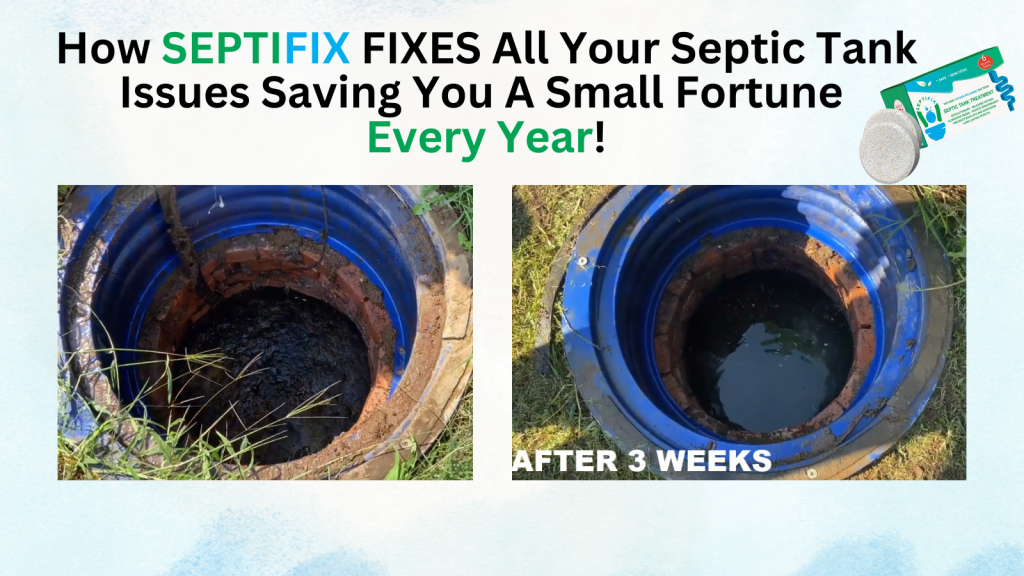Maintaining a healthy bacteria balance is crucial for the proper functioning of your septic system. How to maintain a healthy bacteria balance involves understanding the role of bacteria in breaking down waste and ensuring that your system operates efficiently and safely. In this article, we will explore the importance of bacteria in septic systems and provide tips on how to maintain the right microbial environment.
Table of Content
- Understanding Septic System Bacteria
- Factors Affecting Bacterial Balance
- Tips for Maintaining Healthy Bacteria
- Common Mistakes to Avoid
- Advanced Strategies for Bacterial Balance
- FAQs About Bacteria in Septic Tanks
- Septifix
- Septic Permit Links by State
Understanding Septic System Bacteria
Role of Bacteria
Bacteria are the backbone of septic systems, converting organic waste into less harmful substances. They thrive in the anaerobic (oxygen-free) environment of the septic tank, where they break down solids and liquids. This process is essential for maintaining a healthy septic system, as it prevents the buildup of harmful substances that could contaminate groundwater or cause system failures.
Types of Bacteria Involved
There are two main types of bacteria in septic systems: aerobic and anaerobic. Anaerobic bacteria are more prevalent in septic tanks, as they can survive without oxygen. These bacteria are essential for decomposing organic matter, ensuring that the system remains efficient and effective.
Factors Affecting Bacterial Balance
Household Size and Water Usage
The number of people in your household and your water usage habits significantly impact the bacterial balance. Larger households or those with high water consumption may need more frequent septic maintenance to ensure the bacteria can keep up with the waste load. For instance, if you have a large family, you might need to pump your septic tank more often to prevent overload and maintain a healthy bacterial environment.
Septic Tank Size and Maintenance Frequency
The size of your septic tank also affects bacterial balance. Smaller tanks may require more frequent pumping to prevent overload and maintain optimal bacterial activity. Regular inspections, typically every 1 to 3 years, are crucial to assess the health of your system and ensure it is functioning properly. These inspections can help identify any issues early on, allowing you to take corrective measures to maintain a healthy bacteria balance.
Tips for Maintaining Healthy Bacteria
Proper Waste Disposal
- Avoid flushing non-biodegradable items like baby wipes, sanitary products, and chemicals, as they can harm the bacteria and disrupt the balance.
- Use a garbage disposal wisely, as it can increase the amount of solids entering the tank, potentially overwhelming the bacteria.
Use of Septic Additives
Septic additives can help maintain a healthy bacterial balance by introducing beneficial bacteria into the system. However, it’s essential to use these products judiciously and follow the manufacturer’s instructions to avoid overloading the system. When used correctly, septic additives can support the natural process of maintaining a healthy bacteria balance in your septic system.
Regular Inspections and Pumping
Regular inspections and pumping are vital for maintaining a healthy bacterial environment. Generally, septic tanks should be pumped every 3 to 5 years, depending on usage and tank size. This regular maintenance ensures that the bacteria have the best conditions to thrive and effectively break down waste.
Common Mistakes to Avoid
Flushing Harmful Items
Flushing items like paint, grease, or chemicals can kill beneficial bacteria and disrupt the system’s efficiency. It’s crucial to be mindful of what you flush down the drain to protect the delicate balance of bacteria in your septic system.
Overuse of Chemicals
Using too many cleaning products or chemicals can harm the bacteria in your septic system. Opt for eco-friendly alternatives to minimize this risk and ensure that your system remains healthy and functional.
Advanced Strategies for Bacterial Balance
Monitoring pH Levels
Maintaining the right pH level in your septic tank is important for bacterial health. Most bacteria thrive in a slightly acidic to neutral environment. Monitoring pH levels can help you identify any imbalances that might affect bacterial activity.
Using Natural Methods
Incorporating natural methods, such as adding compost or using beneficial bacteria from natural sources, can enhance the microbial environment. These methods support the natural balance of bacteria without introducing harmful chemicals.
Conclusion
Maintaining a healthy bacteria balance in your septic system is crucial for its longevity and efficiency. By following these tips and avoiding common mistakes, you can ensure your system operates smoothly. Remember, how to maintain a healthy bacteria balance involves a combination of proper waste disposal, regular maintenance, and careful use of additives.
Need help with septic maintenance or looking for more information on septic additives? Check out our product reviews and guides for further assistance.
FAQs About Bacteria in Septic Tanks
What happens if I don’t maintain a healthy bacteria balance in my septic system?
Failing to maintain a healthy bacteria balance can lead to inefficient waste breakdown, potentially causing system backups, odors, and environmental contamination.
Can I use household chemicals in my septic system?
It’s best to avoid using excessive household chemicals, as they can harm the beneficial bacteria in your septic system. Opt for eco-friendly cleaning products instead.
How often should I inspect my septic system?
Regular inspections should be conducted every 1 to 3 years to ensure the system is functioning properly and to identify any potential issues early.
Are septic additives necessary for maintaining a healthy bacteria balance?
While not always necessary, septic additives can be beneficial in maintaining a healthy bacteria balance, especially after system disturbances or when introducing new bacteria.
What are the signs of an imbalance in septic system bacteria?
Signs of an imbalance include slow draining, backups, strong odors, and visible signs of system failure like surfacing sewage.
Can I maintain a healthy bacteria balance without professional help?
Yes, you can maintain a healthy bacteria balance through proper waste disposal, regular inspections, and judicious use of additives. However, professional assistance may be needed for complex issues or system repairs.
Septifix









